DeSci+AI dual narrative, 300,000 fan bloggers calling for orders, why is YesNoError worthy of attention?

Reprinted from panewslab
01/03/2025·3MTomorrow, $BIO, which the market has been waiting for for a long time, will be officially launched. As a DeSci sector project personally supported by Binance, the market has speculated whether the launch of $BIO will drive the on-chain bullishness of the DeSci sector and take away some of the liquidity of the AI sector.
But are the AI and Decsi sectors necessarily competing? No. The recently discussed Solana chain project YesNoError has taken a path to integrate DeSci with AI, using AI technology to review and discover errors in scientific research papers.
Its token $YNE quickly reached a market value of US$60 million on the day it was launched on December 20, and was subsequently promoted by the well-known Twitter KOL Andrew Kang (hereinafter referred to as AK). The current market value is around US$50 million.
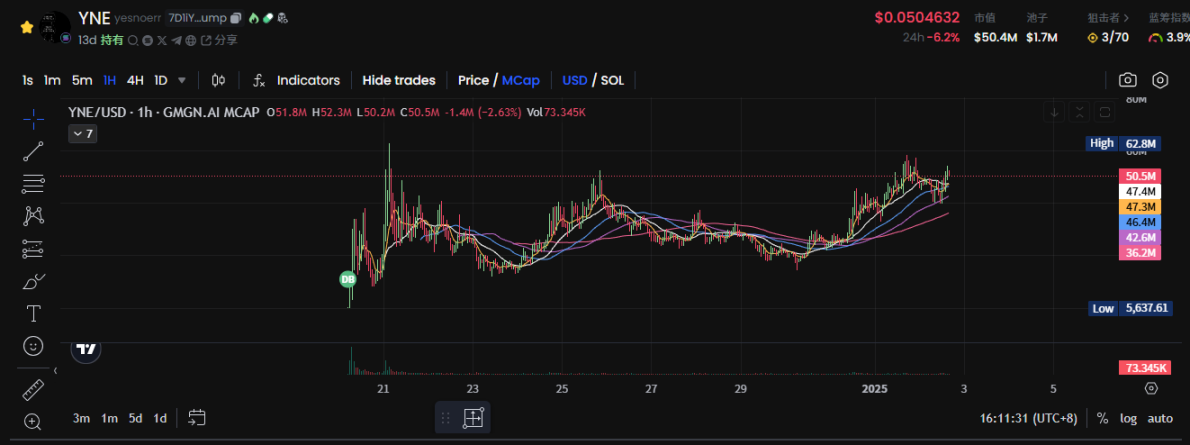
Is AI really necessary to review scientific papers?
If you still don’t understand why YesNoError is so useful, an illustrative tweet from YesNoError team member Ben Parr illustrates the need for censoring misinformation in scientific papers:
In October 2024, a research paper claimed that black plastic kitchenware contained toxins, and the news quickly spread across the media. The Atlantic even published an article titled "Throw away your black plastic kitchenware," sparking public panic. Even Ben Parr himself started cleaning his own kitchen utensils. However, Joe Schwartz, director of McGill University's Office of Science and Society, discovered an important mathematical error in the study—a simple multiplication error that caused the reported toxicity levels to be 10 times higher than the actual levels. This case shows that even seemingly authoritative research can contain significant errors that can often have substantial consequences for ordinary people's lives.
If AI technology is used to review research papers, these low-level errors in numerical calculations can be avoided to the greatest extent. YesNoError was born based on this need.
YesNoError was created by Matt Schlicht and uses OpenAI's o1 model as the technical basis. The way the project works is straightforward: The team uses AI to review research papers and then publishes the findings publicly on their website yesnoerror.com and their official Twitter account.
Through this transparent operation, both the scientific community and the public can be informed of possible problems in important research in a timely manner. Although the project has only just started, it has already achieved some significant results and identified several research errors.
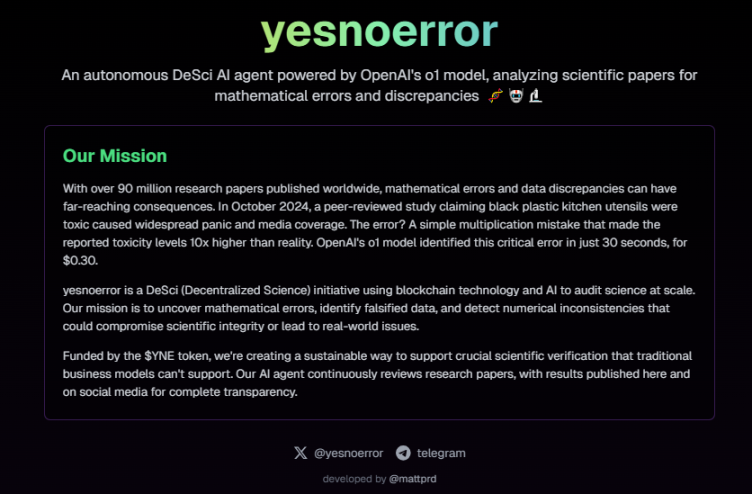
The token $YNE has also been given practical use cases. Holders can spend $YNE to use YesNoError AI to prioritize their own papers for review.
So far, YesNoError AI has reviewed 2,219 papers and indeed found errors in many papers.
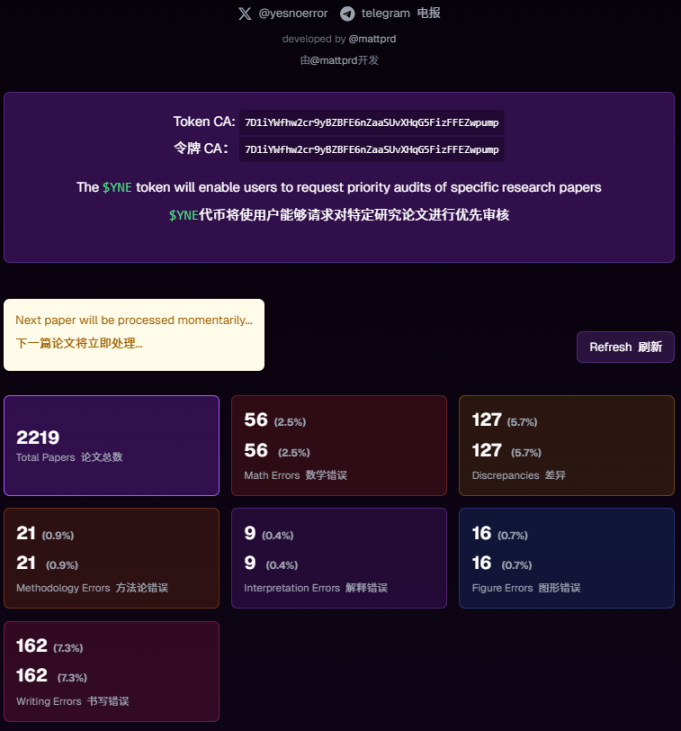
Approval or doubt, some voices in the market
I 'm optimistic about AK, and I'm crazy about posting about it.
On the day the $YNE token was launched, AK, who has always been optimistic about DeSci, expressed his appreciation for the YesNoError project.
AK said "The core value of YesNoError lies in the true implementation of cryptocurrency x AI x DeSci."
YesNoError takes advantage of the characteristics of the cryptocurrency ecosystem. In this special environment, capital does not require return on investment in the traditional sense. As long as you can attract enough attention, you can get sufficient financial support. (That is, the attention economy, if someone pays attention, someone will buy tokens.)
At the same time, YesNoError has also found a good application direction for cryptocurrency. In the right scenario, tokens are no longer pure air, but can indeed support public products that are difficult to sustain with traditional business models.
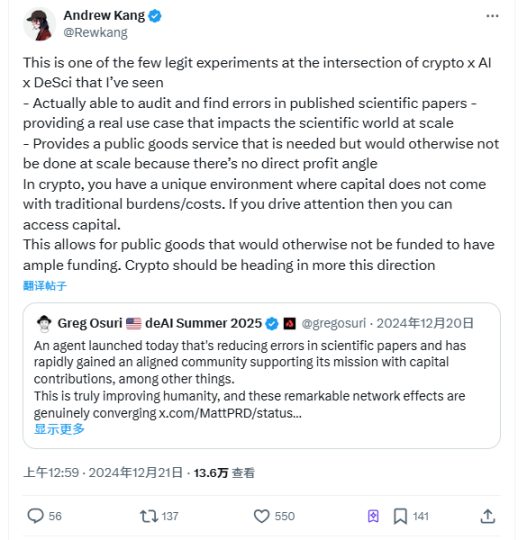
Perhaps because it is really bullish (or holds a lot of positions?), on December 31, AK once again published an article introducing and praising the necessity and practicality of YesNoError from a data perspective.
AK said that YesNoError has the ability to review errors in more than 90 million papers in the global scientific literature database, and it only takes a few weeks or months to complete. If converted to manual review, it will take tens of thousands of years. Even if it is to form a doctoral team of 5,000 people, it will take nearly ten years (and it will not be able to keep up with the pace of publishing new papers during these ten years), and a conservative estimate of $5.4 billion is required. .
The optimized AI model only costs about US$30 million (US$0.3 per paper) to complete more accurate and standardized review work - the cost is less than 1% of manual methods.
If it were in the field of traditional science, raising US$30 million would be a big undertaking, but obviously in encryption, it would be much easier. (Although it contains many elements of speculation, the market value of $YNE has reached 50 million US dollars in only ten days.)
Currently, the AI agent has reviewed more than 1,700 papers and found that the error rate is around 3-4%. And through continuous optimization, its processing speed will be further improved. Of the 90 million papers, there are likely to be many important papers that contain significant errors, the correction of which would have a substantial positive impact on the world.
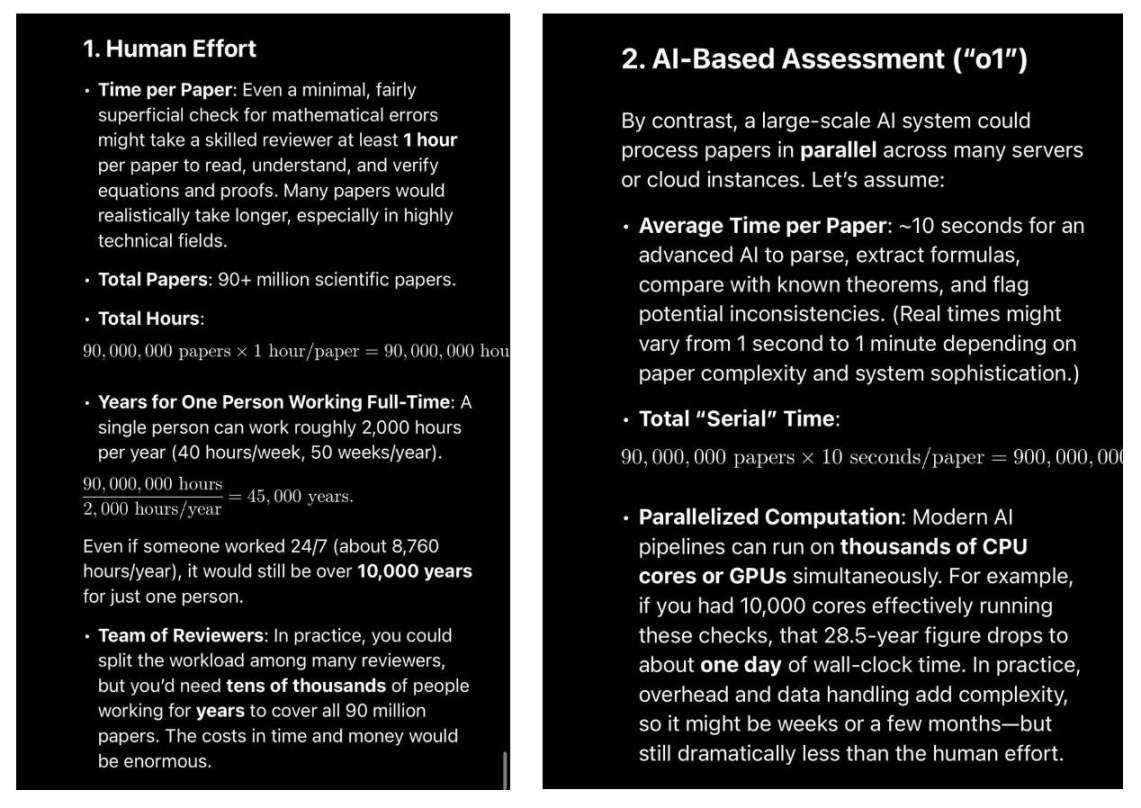
The BIO Protocol official account also agrees with AK’s view:
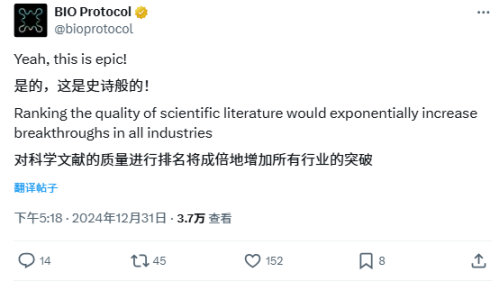
Is it a false demand? look at different voices
In addition to the optimistic voices, there are also people who question the real demand for YesNoError.
Kyle Samani, co-founder of Multicoin Capital, raised objections under AK’s article:
Kyle believes that according to the 28/20 principle, only a few papers are truly important, and these important papers are unlikely to have known errors because they have received sufficient attention.
However, Andrew Kang refutes this with data. He pointed out that even according to Kyle's logic, assuming that only 5% of the 90 million papers are important, there are still 4.5 million important papers. Even if the error rate in these important papers is only 0.1%, it still means that 4,500 important papers have errors that need to be corrected. The “Black Shovel Study” case mentioned above fully illustrates that even papers with great impact may contain errors and have a certain impact on society.
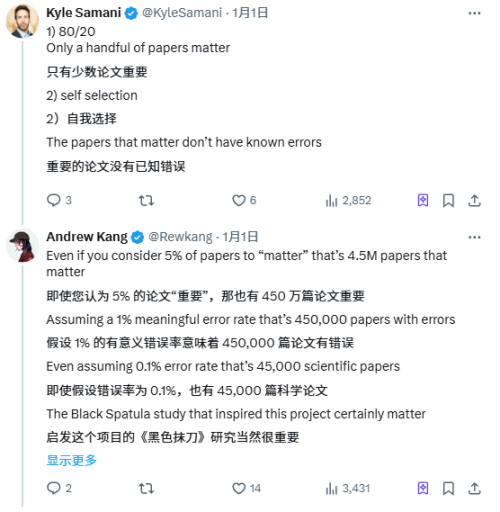
summary
AI reviewing papers is actually nothing new. There have been many use cases of AI reviewing papers since ChatGPT first came out. Looking at the field of encryption, the emergence of YesNoError may not only solve the problem of errors in scientific papers, but also have some real development of use cases for cryptocurrency outside of hype (of course, it may still be in the early stages of the project, and part of the value still depends on due to market hype).
Talking about market behavior, although many promising behaviors in the market can be summarized as "the butt determines the head", if the project is truly feasible and has practical and practical value beyond speculation, then this kind of "standing and spending money" The behavior of making money will surely be recognized by the market.
The specific follow-up development of YesNoError also depends on the determination of the project team to continue after the market hype has passed. We stay tuned.
There are more and more projects that hope to benefit the world.


 chaincatcher
chaincatcher
